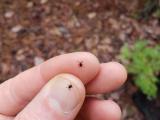Jul 21, 2010
What to do with remaining H1N1 vaccine doses
With millions of doses of H1N1 influenza vaccine still sitting in refrigerators at clinics around the country, a recent article in American Medical News offered guidance on what to do with them. Physicians had an opportunity in May and will have another one this fall to return expired doses, at no cost, to facilities designated by the Department of Health and Human Services (HHS) and the Centers for Disease Control and Prevention (CDC) in the Central Vaccine Recovery Program, HHS spokesman Bill Hall said. But ancillary supplies such as needles and syringes should not be returned. States have their own recommendations about what to do with expired doses. Hall said physicians should keep unexpired vaccine doses until adequate supplies of seasonal flu vaccine are available locally. At that point doctors can dispose of the doses through the federal program or by following state guidelines. The seasonal flu vaccine will include a 2009 H1N1 virus. Hall said a total of about 162 million doses of pandemic vaccine were distributed and about 90 million were administered. Of the leftovers, an estimated 40 million doses expired Jun 30, he reported. The remaining 31 million to 32 million have varied expiration dates, most of them in 2011, he said. Infectious disease experts quoted in the story agreed that the amount of unused vaccine is disappointing but said the current number of expired doses is not outrageous, given that millions of doses of seasonal vaccine go unused each year.
Jul 19 American Medical News story
Researchers find new clues in tickborne infections
Among new tick-related infectious disease findings presented at the International Conference on Emerging Infectious Disease (ICEID), which ended Jul 14 in Atlanta, were a report on the first zoonotic babesiosis case documented in Tennessee and a report on ehrlichiosis infections in Minnesota and Wisconsin involving a species that had not previously been identified in North America. In the first report, a group from the Tennessee Department of Health, Vanderbilt University, and the CDC diagnosed babesiosis in an immunosuppressed patient who began to have fever, fatigue, and headache. He had not traveled outside Tennessee in several years and had been exposed to ticks during hunting trips. Babesia parasites were noted on the man's blood smear, and molecular analysis revealed that it was a novel species, but attempts to isolate it were unsuccessful. The man's symptoms resolved after 10 days of treatment. The researchers said efforts to identify the animal host and tick vectors are ongoing and that the case serves as a reminder that patients can have babesiosis without exposure to known endemic areas and without testing positive to previously known species. In the second report, local health officials and CDC and Mayo Clinic experts described the identification of Ehrlichia DNA from Mayo Clinic blood samples of patients from the two states involving a species similar to E muris that had not been previously identified in North America. The organism was found in 2009 in the blood of 4 patients, 3 from Wisconsin and 1 from Minnesota. All had reported fever and headache, and all had lymphopenia. All recovered with doxycycline treatment. Serological studies also suggested 40 more probable cases among Wisconsin residents. A survey of the patients found dog contact in 91% and possible tick exposure in 85%. The group concluded that more studies are needed to identify the epidemiologic and clinical features of infections with the E muris–like organism and that better testing in the region could help identify the infections.
Jul 14 ICEID abstracts (See Boards 310 and 324)


















